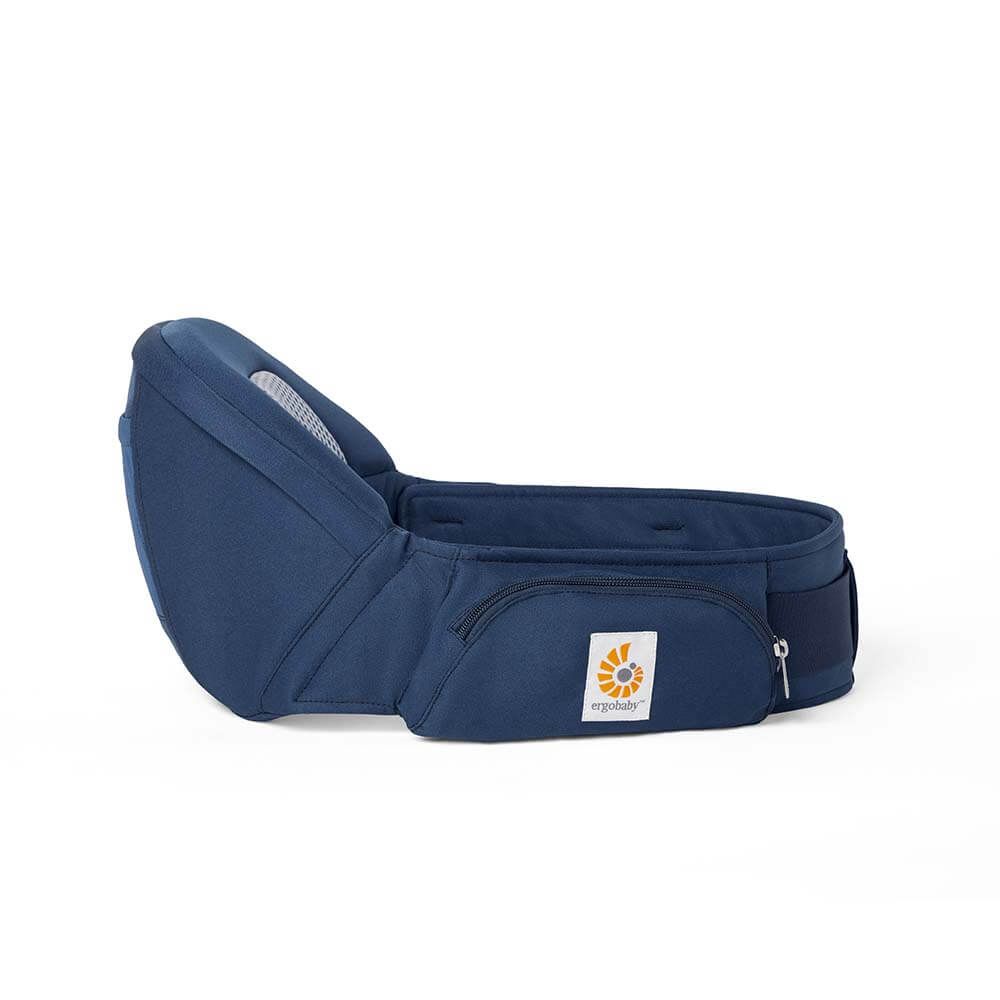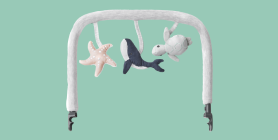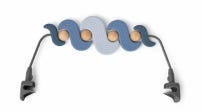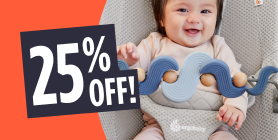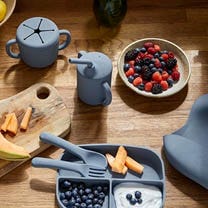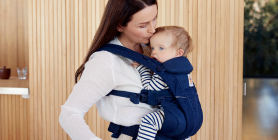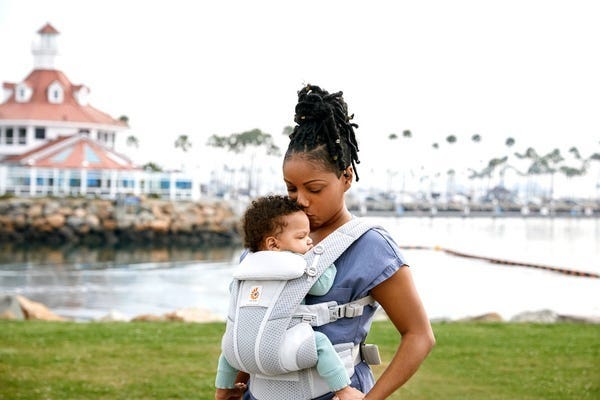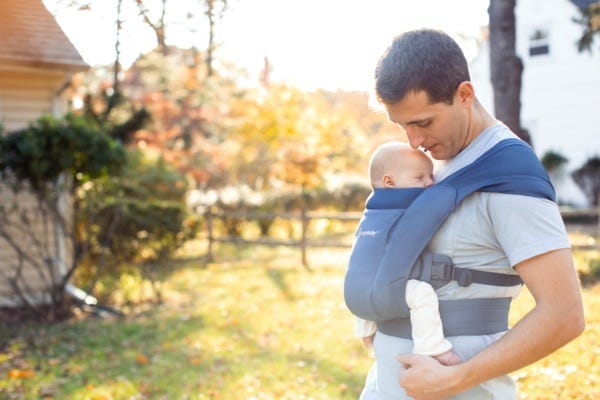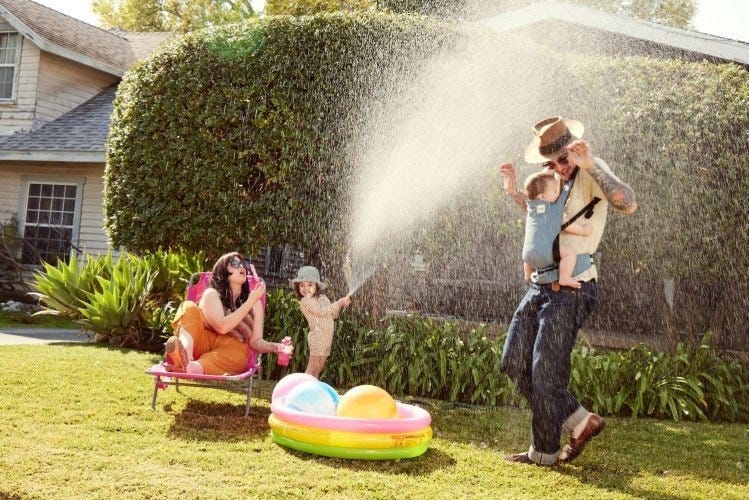Breastfeeding: Nutrition for Better Brains and Super Moms Breastfeeding can’t guarantee a super baby who walks at 4 months and differentiates colors, letters, and numbers by 6 months, but research does indicate that it is the best nutrition for your baby, helps fight infection, promotes brain development, and may even increase academic performance and IQ. And breastfeeding definitely makes you a super mom! The best nutrition for your baby:
- Breastfeeding provides the calories and nutrients that are just right for your baby. The composition of breast milk changes as your baby grows to meet her nutritional needs. Breastfed babies may need a vitamin D supplement, so ask your pediatrician.
- Breast milk passes antibodies to your baby. In addition to nutrients, breast milk also gives your baby protection against infection and disease. Breastfeeding may also prevent or delay allergies. Remember that any amount of breast milk that you are able to provide for your baby is beneficial.
- Breastfeeding promotes brain development. Breast milk contains special fats (DHA and cholesterol) and a high amount of the right type of sugar (lactose) to promote brain development. Studies indicate that children who are breastfed get higher grades in school and have higher average IQs.
Healthy breastfeeding tips for moms:
- Meet extra calorie needs by eating nutritious food. Breastfeeding uses about 500 extra calories per day. These calories should come from healthy choices, not empty sugar calories (like white bread or sweets). If you don’t eat sufficient calories or if you exclude food groups from your diet, it can affect your milk supply. Your diet should include:
- plenty of complex carbohydrates like whole grains, vegetables, fruit and legumes;
- a variety of protein foods like lean cuts of meat, seafood (do not choose those high in mercury), beans and peas, eggs, and nuts and seeds;
- healthy fats like vegetable oils, nuts and seeds; and
- calcium rich food foods like dairy, canned fish, green leafy vegetables, and some nuts (i.e., almonds).
- Add a lot of flavor. Different flavors from the food you eat pass through your breast milk to your baby. Research indicates that babies enjoy these different flavors and may be more accepting of a variety of foods once they start solid foods.
- Be aware of foods to which your baby may be sensitive. If your baby has colic or GI problems while breastfeeding, she may be reacting to something you ate. Some common culprits are dairy, citrus, cruciferous vegetables (like broccoli and cabbage), and chocolate. (There is lack of evidence, however, that excluding certain foods from your diet during breastfeeding will prevent allergies.) Check with your doctor about foods to omit from your diet.
- Avoid (or limit) alcohol and caffeine and drink plenty of fluid. Alcohol and caffeine can pass through your breast milk to your baby. You may be able to have alcohol occasionally if you time it right, but remember that it takes 3-4 hours to pass through your system. Alcohol can affect your milk let down and babies may drink less milk after the mother consumes alcohol. Caffeine can lead to dehydration and can be difficult for a baby to break down if a lot passes through the breast milk. Always consume plenty of liquid (about 16 cups per day), especially if you drink caffeinated beverages (like coffee or tea).
- Be patient with weight loss. Remember that every woman’s body reacts differently when they are breastfeeding. Eat small, frequent (and healthy) meals and snacks to prevent hunger. Some women will lose weight quickly and others will lose weight more slowly. Be patient with your body and realize it is providing the perfect nutrition for your baby. Shoot for slow, steady weight loss (restricting your calories too much can affect milk production).
- Keep taking your vitamins. Most obstetricians recommend continuing prenatal vitamins during breastfeeding. Taking vitamins does not take the place of a healthy diet-- it just helps cover any additional needs that fall short in your diet.
- Request healthy food. When friends and family ask what they can do to help, ask them to provide you with home cooked, healthy meals and snacks. That way you can spend more time resting and less time cooking (and still eat healthy food). Suggest a fresh fruit or vegetable tray as a perfect gift for you and your breastfed baby.
- Get plenty of rest. Breastfeeding is tiring, especially at first when you are getting up throughout the night to feed your baby. Try to take naps during the day and ask others to help with household tasks and other children so you can rest.
- Call for help if you need it. If you are having any problems with breastfeeding, call your doctor or the La Leche League for support and answers (check their website for a local number http://www.llli.org/).
A delicious, nutrient-packed yogurt dip for fruit. This simple recipe has many important nutrients for a breastfeeding mother: Greek-style yogurt is high in protein and calcium (and generally lower in sugar than regular flavored yogurts); almond butter is high in protein, healthy fats, calcium and fiber; and flax seeds contain healthy fat and fiber. ½ cup vanilla flavored, Greek-style yogurt 3 Tablespoons almond butter 1 teaspoon flax seeds Stir all ingredients together until smooth. Serve with cut up fruit, like strawberries, apples, and bananas.
Emotional Benefits of Getting Outside
Spending time in nature with your baby can strengthen the bond between you. The simple act of holding your baby close, feeling their warmth, and sharing new experiences together can create strong emotional connections. It’s also a wonderful way to reduce stress and improve your mood. When my littles were extra fussy, I’d take a walk around the neighborhood. Even though I don't live in an area with trails and surrounded by nature, simply behind outside changed everything. A little vitamin D does wonders!
Cognitive Development
Nature is a sensory wonderland for babies. The different sights, sounds, and smells can stimulate your baby’s senses and promote cognitive development. Watching leaves rustle, hearing birds chirp, and feeling the texture of a tree bark can all contribute to their learning and development.
All About Baby Carriers for Nature Adventures
Choosing the Right Baby Carrier
When it comes to selecting the best baby carrier for summer adventures, there are several options to consider.
Types of Baby Carriers:
- Wraps: Perfect for newborns, providing a snug and secure fit.
- Slings: Ideal for quick and easy use, offering good ventilation.
- Soft Structured Carriers: Versatile and comfortable for both parent and baby, suitable for longer trips.
Factors to Consider:
- Baby’s Age and Weight: Ensure the carrier is appropriate for your baby’s size and weight. For example, Ergobaby’s Embrace Newborn Carrier is perfect for the fourth trimester where baby is small and you’re looking for an easy way to stay close. As they grow, you’ll want to upgrade to an all-position carrier that’s meant for growing babies.
- Parent’s Comfort and Ergonomics: Look for carriers with padded shoulder straps and lumbar support if you’re planning on longer outings.
- Ease of Use: Choose a carrier that is easy to put on and take off.
- Climate and Breathability: Opt for carriers made of breathable fabrics to keep you and your baby cool in hot weather.
Safety Tips:
- Proper Positioning: Ensure your baby is seated correctly, with their legs in an "M" position and their head should be close enough to kiss.
- Checking for Wear and Tear: Regularly inspect your carrier for any signs of damage.
- Ensuring Adequate Support: Make sure the carrier provides proper support for your baby’s head and neck.
Exploring Nature with a Baby Carrier
Ideal Spots for a Nature Walk with Baby
- Parks and Gardens: Great for leisurely walks and picnics.
- Nature Trails and Forests: Perfect for more adventurous outings.
- Beaches and Lakesides: Wonderful for enjoying the water and sand, with the right carrier.
Activity Ideas
- Hiking: Enjoy a scenic hike with a hiking baby carrier that offers support and storage.
- Bird Watching: Use your carrier to keep your baby close while you explore and observe wildlife.
- Picnics: A carrier can free up your hands, making it easier to carry picnic supplies.


Advantages of Using Strollers for Nature Adventures
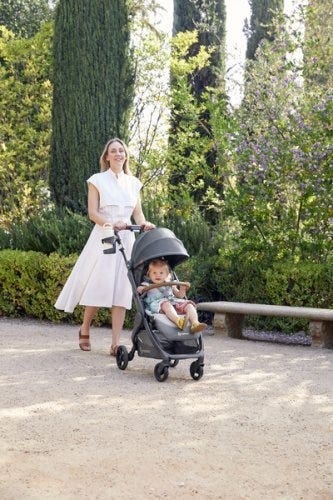

While baby carriers are fantastic for mobility and closeness, depending on the adventure of choice you might want to be a stroller along too.
There are a LOT of baby stroller options on the market. So we understand how confusing it can be to choose the one that’s right for your family. Not only are there a variety of brands, but a variety of strollers that serve different purposes.
There are a few types of strollers on the market:
- Full-sized stroller: This is typically the stroller parents thing of buying for all its versatility.
- Lightweight or umbrella stroller:These compact strollers are perfect for on-the-go adventures.
- Jogging stroller: Designed for parents who want to combine fitness with outdoor adventures.
- Double stroller: Designed for parents with multiple kids, especially twins.
- Car seat carrier: These strollers connect to a specific car seat. We don't typically recommend these as they can be unsafe for baby and uncomfortable for parents who are pushing.
Learn more about the types of strollers and which one would be best for you.
Benefits of Bringing a Stroller
- Storage Space for Gear: Ample room for carrying all your essentials like a diaper bag, beach toys and more.
- Shade and Weather Protection: Built-in canopies to shield your baby from the sun when they are lounging.
- Options: If you have more than one kid, you can stroll with one and carry the other. Or, if you’re getting warm or your little one is getting fussy, you can switch up their position from stroller to carrier or vice versa.
Safety Tips for Strollers
- Ensure your stroller is in good working condition. Make sure buckles are still buckling and that there are no rips or holes that could compromise your baby’s safety.
- Use sunshades or bug nets to protect your little one’s skin.
- Securing the baby properly: always buckle up your baby for safety even if you think they are old enough to go without the buckle.
Combining Baby Carriers and Strollers
For the ultimate flexibility, consider using both a baby carrier and a stroller on your outings.
Combining both options allows you to adapt to different situations. Use the carrier for more rugged trails and switch to the stroller for smoother paths or when your baby needs a nap.
Transition Tips
- Smooth Transitions: Plan stops where you can easily switch from carrier to stroller.
- Pack Light: Only bring essentials to make transitions easier.
Tips for a Successful Adventure
Planning Ahead
- Route Planning: Choose baby-friendly trails and parks. Check local mom groups or outdoor groups and get recommendations for the best outings for kids.
- Check Weather Conditions: Avoid extreme heat or unpredictable weather. Even with our most breathable carriers, when it’s hot, it’s hot. And having two bodies against each other in the heat will be naturally hot and sticky already.
- Packing Checklist: Include diapers, snacks, water, sunscreen, and a first-aid kit. These all-position carriers have storage pockets where you can fit some of the items easily!
- Stay Hydrated and Nourished: Pack healthy snacks to keep energy levels up and bring plenty of water for both you and baby.
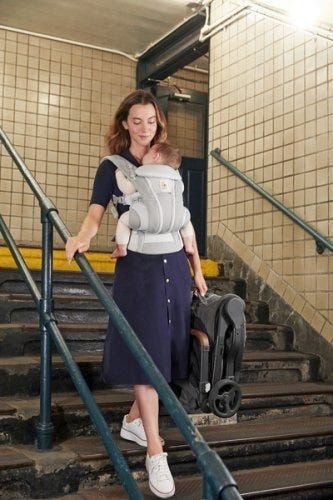

Summer adventures with your baby are a wonderful way to create lasting memories and enjoy the beauty of nature together. From baby carriers to strollers, Ergobaby products are designed to provide comfort and ease for both you and your little one. So, gear up, get outside, and explore the world with your baby by your side.
Ready to embark on your own summer adventures? Check out Ergobaby’s range of baby carriers and strollers to find the perfect match for your family’s needs. Visit our website today and start planning your next outdoor excursion!





